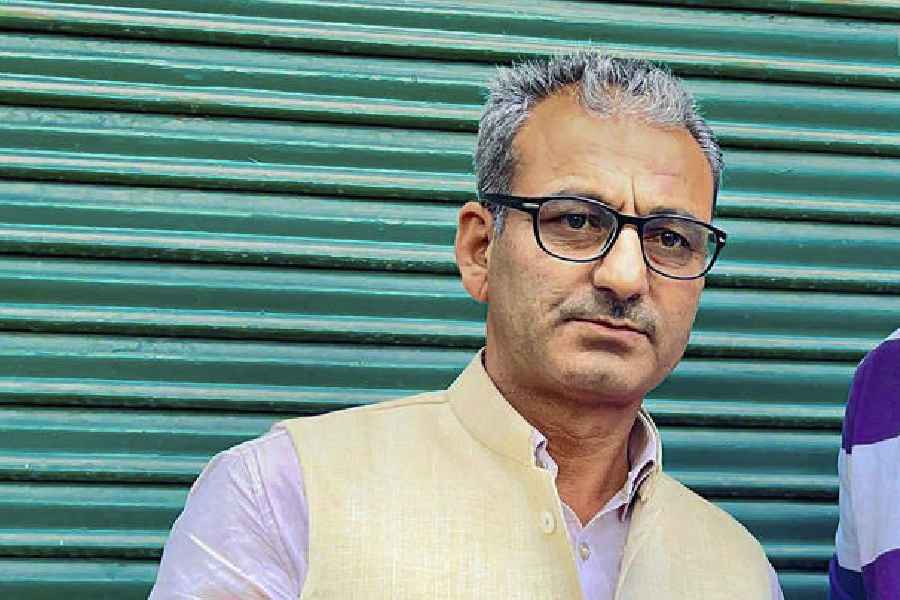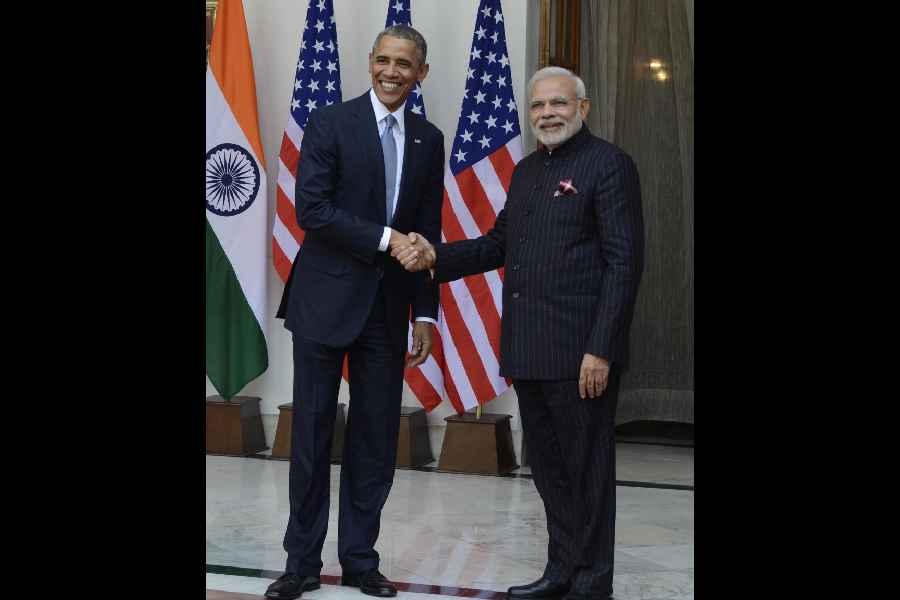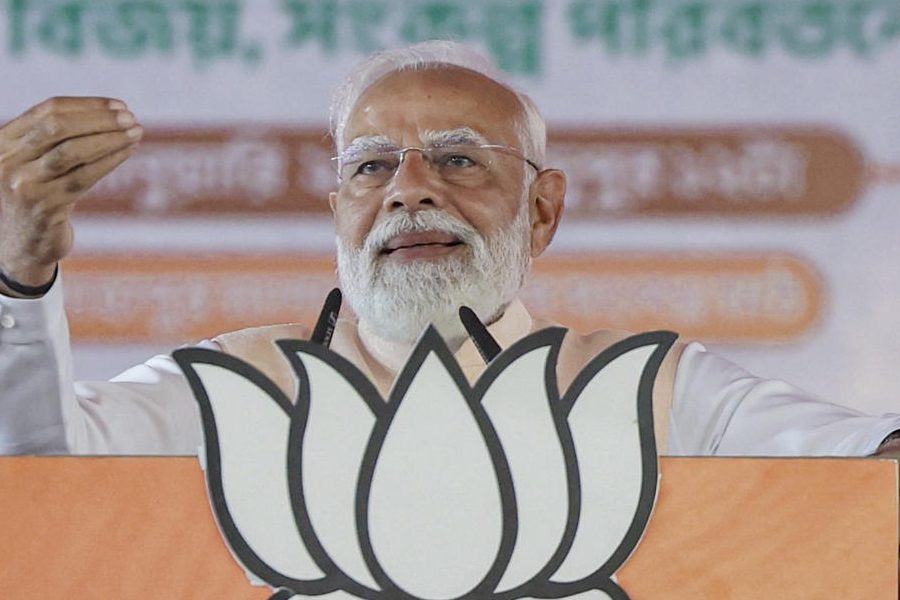LIVING RUIN




On August 9, 1947, when the rest of the country awaited the freedom hour with bated breath, Mahatma Gandhi arrived at the Khadi Pratisthan in Sodepur.
Sodepur lies on the outskirts of Calcutta,14 kilometres to the north. The ashram had been Gandhi's Satyagraha camp during the Independence movement. And post 1931, after he stopped visiting Sabarmati in Gujarat because it had got mired in ugly caste politics, the Sodepur ashram became a regular haunt of his. In 2014, when it featured in the tentative list of the Unesco World Heritage places in the category titled "Sites of Satyagraha, India's non-violent freedom movement", it was described thus - "second home and base in Eastern India for Gandhiji to promulgate the virtues of Satyagraha".
That historic year, Gandhi stayed at the Sodepur ashram between August 9 and 13. Saddened by the communal riots that raged all around and the impending Partition, he spent his time here in prayer and solitude, as is borne out by his letters.
Seventy years on, standing on the same hallowed ground, it is difficult to imagine anything quite so momentous. Wild grass and weeds engulf the ashram, the terracotta paving lies shattered along. There was a time when the rooms were vibrant with action --- khadi spinning, production of handmade paper, fountain pen ink, ghee, cheese and honey. Now, all nine rooms remain locked all the time. The looms and yarns lie heaped in a corner. The last time a yard of khadi was spun out of here was in 2000. Water has seeped through the broken tiles and summoned an ugly patchwork of mildew. After dark, locals avoid the place for fear of snakes and anti-socials, whose den it has supposedly become.
Veteran Gandhian Asit Ranjan Das has been the secretary of the Khadi Pratisthan Trust Board, which has been running the ashram, since 1974. He blames the state government for the neglect. The 82-year-old tells The Telegraph about a grant the centre gave back in 2000 but laments the state's government's apathy towards what has now become a ramshackle institution.
The 68-year old Chetan Ravi Vyas is caretaker of the place. He has already spent a half-century here. He tries to open the rooms at Das's bidding. But some of the locks are so old, the keys won't turn, one even breaks.

The ashram was built in 1921 by chemist and innovator Satish Chandra Dasgupta, who quit his job as superintendent at the Bengal Chemical Works, India's first pharmaceutical company set up by scientist-entrepreneur Acharya Prafulla Chandra Roy.
Among other things, Dasgupta had invented a fire extinguisher that was apparently more effective than the ones produced in Britain. The product did good business across India. As incentive, Roy shared half the profit - Rs 2 lakh - with him. With that money, Dasgupta purchased the piece of land - 18 bighas - beside the Sodepur railway station and established the Khadi Pratisthan.
His wife Hemprabha was the original Gandhian though. It is said she had donated all her gold ornaments for the cause of the freedom struggle to Gandhi. Both husband and wife stayed at the ashram, which became the laboratory for Dasgupta's innovations - a cheaper and simpler oil press, an economical way of manufacturing paper from bamboo pulp. Dasgupta also started a press to print swadeshi books and manuals for setting up indigenous small-scale industries.
Gandhi was so impressed by these endeavours that he wrote a letter to Hemprabha on December 13, 1928, saying: "I shall try to treat Sodepur on the same footing as Sabarmati... The existence of Sodepur is for the sake of Khadi, while that of Sabarmati is for the experiment in truth, etc..."
The longest Gandhi stayed here was in 1939, for a period of 34 days. His letters datelined Sodepur - there are over 500 of them - are to be found in The Collected Works of Mahatma Gandhi.
The Sodepur ashram was also witness to the historic meeting between Gandhi, Subhash Chandra Bose and Jawaharlal Nehru, after the March session of Tripuri Congress. Soon after this, Bose quit the Congress.
The caretaker, Vyas, after much struggle, manages to turn a key in a rusty lock.
Musty air strikes the face. Gandhi's bed is covered with a khadi spread and layers of dust and cat paw prints. His charkha, however, is inside a glass case. Some of the memorabilia have been shifted to the Gandhi Memorial Museum in Barrackpore. Everything else - furniture and documents - we are told "got lost". Vyas says he's not allowed to open the rooms and sweep ever since there have been efforts to restore the place. The logic is difficult to fathom but there it is.
Krishanu Bhattacharya, a schoolteacher and author of a few books on the heritage of Sodepur, talks about infighting in the Ashram Trust and siphoned funds. Das rubbishes these. He says, "We transferred the fund allocated by the central government to the district magistrate so that he could renovate and protect the memorial."
There are others who want to just get ahead with the restoration of the property. Sekhar Seth is one such person. He is founder of DRS Tech, an IT company in Sodepur, and has taken a vow to revive the ashram.
Seth has drawn up a detailed action plan, which, according to him, the state tourism department has shown interest in. Perhaps something will come of it.
But till then the ashram remains buried in oblivion. Its deserted corridors and ravaged heritage is a reminder of collective failure, a collective memory lapse. Vyas locks the doors of the rooms he had opened and the compound gate once more. Standing instructions after all; lest it all slips away.
Legacy List
Other Gandhi ashrams included in the Unesco World Heritage as sites of Satyagraha
Kochrab Ashram in Gujarat
Established in 1915, this was the first of Gandhi’s ashrams
Status: A tourist attraction maintained by Gujarat Vidyapith
Sabarmati Ashram in Gujarat
This was the residence of Mahatma Gandhi between 1917 and 1930 and the laboratory for his social experiments
Status: Has been developed into a museum — Gandhi Smarak Sangrahalay and the adjoining Hriday Kunj; a bookstore sells literature and memorabilia related to Gandhi’s life
Sevagram Ashram in Wardha, Maharashtra
This was the residence of Gandhi post 1936
Status: Developed on the lines of Sabarmati Ashram, this one also has a museum and a bookstore. It is maintained by a trust











